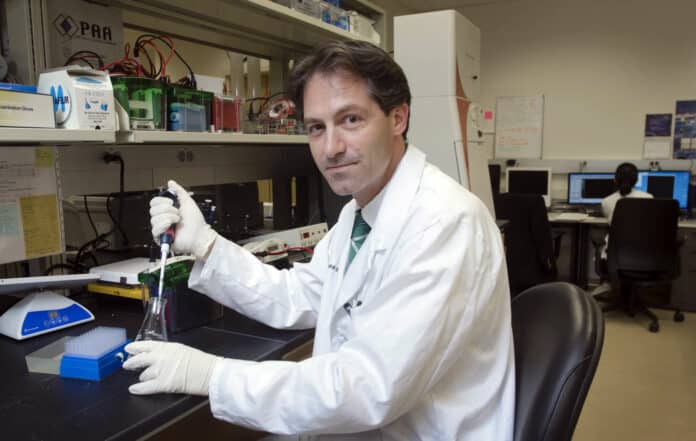We all are aware of the disease of cancer. Cancer is a disease in which abnormal cells divide uncontrollably and destroy body tissue. In all types of cancer, some of the body’s cell start to divide without stopping and spread into surrounding tissues. There are various types of cancer, like breast cancer, prostate cancer, brain cancer, blood cancer, ovarian cancer, lung cancer, skin cancer, etc. For decades, various research has been going on to diagnose and fight against advanced and complex types of cancer. The researchers are also trying to develop a cancer-fighting drug. There are many advanced diagnostic systems available nowadays to treat cancer-fighting drugs. There are many advanced diagnostic systems available nowadays to treat cancer.
Similarly, in our earlier article named ‘Nisin: cheese can target cells’ where we came to know about a dairy product, cheese has the potential that it can treat 30 types of cancer cells. Researchers from the University of Michigan School of Dentistry were studying dairy products. They found a cheese named Nisin. Their research proves that Nisin has the ability to diagnose neck and head cancer cells within just nine weeks.
At Michigan State University, researchers are working to develop a new cancer-fighting drug. Scientists are studying to develop a natural bacterium-produced chemical with anti-cancer properties.
Andre Bachmann, professor of pediatrics and associate chair for research in MSU College of Human Medicine’s Department of Paediatrics and Human Development, is studying this research with Plant Biologist Robert Dudler.
Both are working together on this research so that they can prove that this research could change the way of treating illness.
From where they got the idea to develop cancer-fighting Drug?
Nowadays, there are lots of ways/treatments, such as Immunotherapy (using the immune system to treat cancer), Chemotherapy (using different types of drugs to destroy cancer cells) and etc., are available to treat cancer.
Similarly, Dudler initially found the substance known as Syrabctin or Syringolin A. Syrabctin or Syringolin A is the product of a mixed nonribosomal peptide synthetase/polyketide synthase encoded by certain Pseudomonas syrigaa strains. Dudler and Bachmann tested it simultaneously and found that it has properties to kill cancer cells.
In 2008, Bachmann, Dudler, and other seven researchers published the study in the international science journal Nature. They reveal that “Syrabactin is a proteasome inhibiting drug. It could kill cancer cell by interrupting their ability to digest proteins.”
Bachmann, the lead author of a follow-up study in the April issue of the Journal of Biological Chemistry, disclosed a synthetic and slightly modified version of syrabactin. It is also known as TIR-199. It killed multiple myeloma and neuroblastoma cells. It can also prevent from spreading other kinds of cancers.
Researchers are very excited about it. They indicate that many years of further research lie ahead before some variation of TIR-199 may be tested in human clinical trials.
Continuous simultaneous work of academic researchers from different scientific disciplines, meaningful research funds through foundation grants, and support from the different pharmaceutical industries both are essential to get TIR-199 in human clinical trials.
According to the researcher, “This study combines chemistry and cancer biology. It is a very complementary interplay between two different sciences.”
How TIR-199 made?
Alteration of the molecular structure of syrabactin to create TIR-199 is done by Michael Pirrung. Michael Pirrung is a co-author of this latest study, and an organic chemist syrabactin to create TIR-199, is done by Michael Pirrung. Michael Pirrung is a co-author of this latest study, and an organic chemist syrabactin to create TIR-199, is done by Michael Pirrung. TIR-199 proves that it is more effective than syrabactin.
Pirrung compared proteasomes to an office paper shredder. When protein enters cancer cells, the proteasome cuts it into cancer shreds. It is done because of allowing the cells to grow and spread. TIR-199 is created and acts like a proteasome inhibitor. It interrupts that process and causes cancer cells to die.
- While testing in the laboratory, TIR-199 killed multiple myeloma cells (cancer of blood’s plasma cells).
- It is also effective against neuroblastoma (a highly advancing childhood cancer that forms in nerve cells).
- TIR-199 showed strong action against kidney cancer in tests by National Cancer Institute (NCI).
Bachmann said, “That made them (NCI) very interested in this compound, and we continue to work with the NCI to further evaluate the compound.”
Researchers will spend some more years adjusting the molecular structure of TIR-199 in the hope of improving its cancer-fighting abilities while reducing side effects. Eventually, this chemical could be used in combination with other drugs to stop cancer by hitting multiple targets.
Bachmann said, “I think, we need several rounds of modifications before we can in the far future consider clinical trials. It is not the final version, but we are on the right track.”
Journal Reference
- André S. Bachmann et al., Syrbactin Structural Analog TIR-199 Blocks Proteasome Activity and Induces Tumor Cell Death*. Journal of Biological Chemistry Volume 291, Issue 16, P8350-8362, April 2016. DOI: 10.1074/jbc.M115.710053
